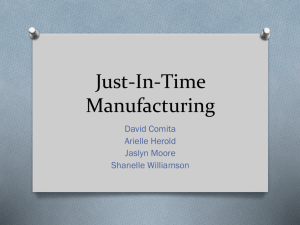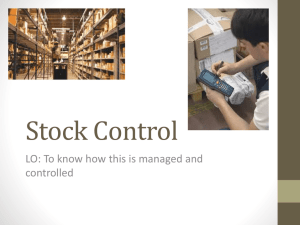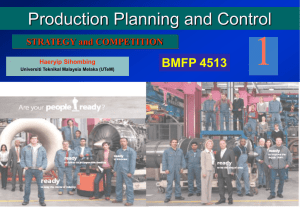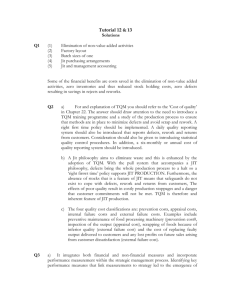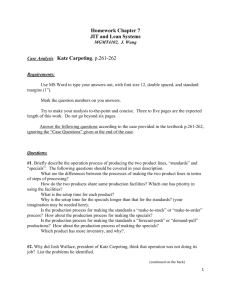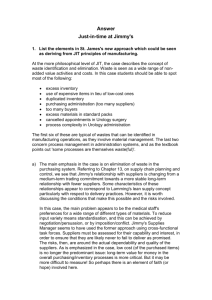Publication, „10th Doctorate Conference on 20 november 2007 Herlay”
advertisement
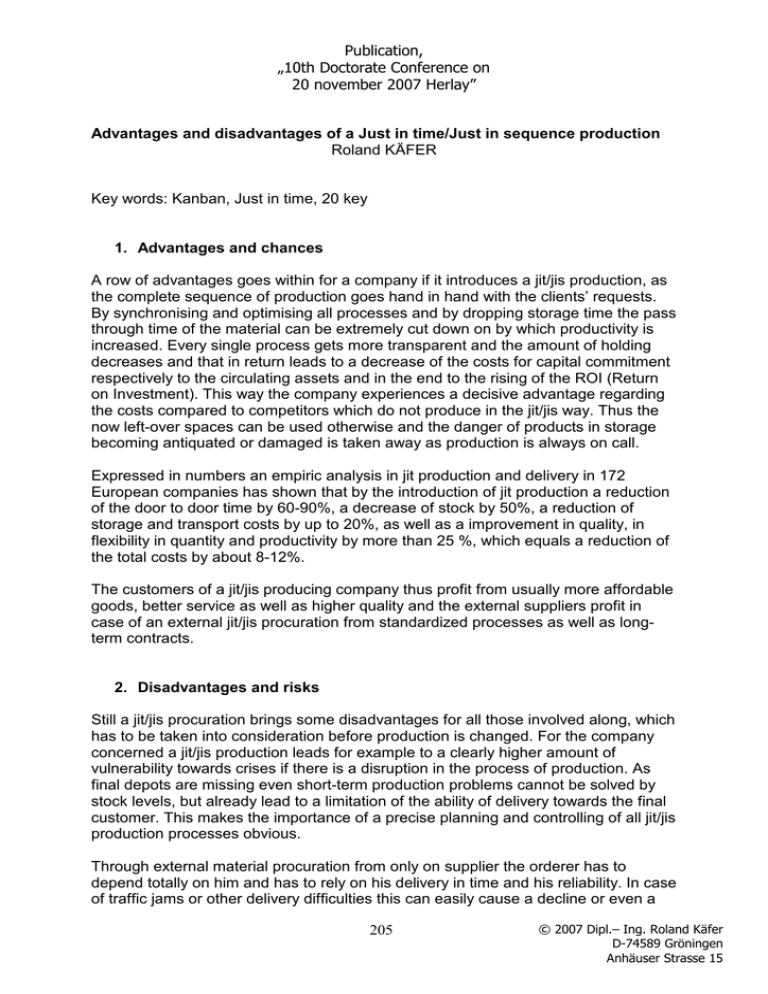
Publication, „10th Doctorate Conference on 20 november 2007 Herlay” Advantages and disadvantages of a Just in time/Just in sequence production Roland KÄFER Key words: Kanban, Just in time, 20 key 1. Advantages and chances A row of advantages goes within for a company if it introduces a jit/jis production, as the complete sequence of production goes hand in hand with the clients’ requests. By synchronising and optimising all processes and by dropping storage time the pass through time of the material can be extremely cut down on by which productivity is increased. Every single process gets more transparent and the amount of holding decreases and that in return leads to a decrease of the costs for capital commitment respectively to the circulating assets and in the end to the rising of the ROI (Return on Investment). This way the company experiences a decisive advantage regarding the costs compared to competitors which do not produce in the jit/jis way. Thus the now left-over spaces can be used otherwise and the danger of products in storage becoming antiquated or damaged is taken away as production is always on call. Expressed in numbers an empiric analysis in jit production and delivery in 172 European companies has shown that by the introduction of jit production a reduction of the door to door time by 60-90%, a decrease of stock by 50%, a reduction of storage and transport costs by up to 20%, as well as a improvement in quality, in flexibility in quantity and productivity by more than 25 %, which equals a reduction of the total costs by about 8-12%. The customers of a jit/jis producing company thus profit from usually more affordable goods, better service as well as higher quality and the external suppliers profit in case of an external jit/jis procuration from standardized processes as well as longterm contracts. 2. Disadvantages and risks Still a jit/jis procuration brings some disadvantages for all those involved along, which has to be taken into consideration before production is changed. For the company concerned a jit/jis production leads for example to a clearly higher amount of vulnerability towards crises if there is a disruption in the process of production. As final depots are missing even short-term production problems cannot be solved by stock levels, but already lead to a limitation of the ability of delivery towards the final customer. This makes the importance of a precise planning and controlling of all jit/jis production processes obvious. Through external material procuration from only on supplier the orderer has to depend totally on him and has to rely on his delivery in time and his reliability. In case of traffic jams or other delivery difficulties this can easily cause a decline or even a 205 © 2007 Dipl.– Ing. Roland Käfer D-74589 Gröningen Anhäuser Strasse 15 Publication, „10th Doctorate Conference on 20 november 2007 Herlay” hold up in production, as for example the American automobile manufacturer General motors had to experience because of the insolvency of his supplier Delphi. To prevent this danger and to reduce the dependency to suppliers companies with jit/jis production systems refer to more than one supplier for the same parts and consider in their planning at least little time or storage buffers. Still a risk for the companies remains, as because of the constant exchange of information with the suppliers company secrets may be revealed. Even from the external suppliers’ point of view a jit/jis delivery involves risks which are not to neglect and certain requirements: the constant exchange of information is very elaborative for the external supplier, too, as it implies a faultless working itsystem. The dependency from the orderer and the aligned liability to crises because of the extreme differentiation is not to be underestimated. Usually an extreme flexibility and constant readiness to deliver is asked from him and leads in case of non-compliance to high conventional punishments. Other costs are for the external supplier perhaps relatively high, too, because of the guaranteed above-average quality standard of his products and the additional storage costs with various assemblies. The storage costs are in case of jit/jis procuration transferred from the large concerns to the often relatively small external suppliers, which always have to have a great number of single parts for the needed assemblies available. Further the external supplier is not free in his choice of location but is forced to settle down nearby his orderer to reduce the transport’s expense and the lead time, even though another location may be more suitable for competitive reasons. In the end a jit/jis procuration has negative effects on the environment as well as additional congestion is caused by frequent transports with little shipments. This exposure is very high for short periodic calls or far away manufacturing facilities and can lead up to short dated deficiencies or traffic jams as well as a higher noise nuisances from trucks. In the long run a higher traffic volume implies more expenses for building streets and carries ecological consequences because of increased pollutant emissions and consumption of important resources. The storage is quasi transferred from the company to the streets. Those negative aspects affect the companies in return as the additional air pollution damages its image if it becomes public and narrows the peoples’ confidence. Because of that companies try to cut down the congestion by locating many external suppliers nearby in so-called industrial parks. Further synergy effects can save costs and therefore flexibility, reliability and quickness of delivery increases. 206 © 2007 Dipl.– Ing. Roland Käfer D-74589 Gröningen Anhäuser Strasse 15 Publication, „10th Doctorate Conference on 20 november 2007 Herlay” information of requirement consumer source control cycle production dispatch allocating of material customer orders dispatch distributor/ stock Kanban assembly line Kanban producktion stocks Kanban / JIT – material supply in-house-production supplier stock distributor illustration own1: Literature: (1) Schulte C. „2005“: Logistik/Wege zur Optimierung der Supply Chain, 4. Aufl., Mü, (2) H.-O. Günther, Produktion und Logistik, 7. Aufl., B, (3) Schulte G. „1996“: MAWI und Logistik, Mü, 207 © 2007 Dipl.– Ing. Roland Käfer D-74589 Gröningen Anhäuser Strasse 15
